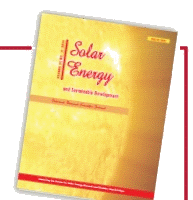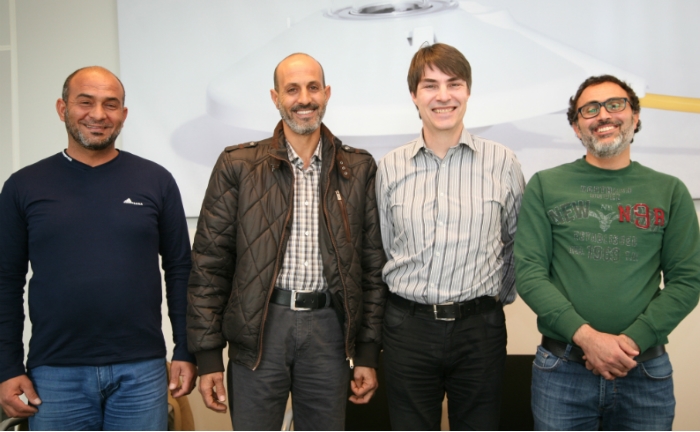KIPP & ZONEN wrote on May 11, 2014: CSERS stands for the Centre for Solar Energy Research and Studies in Tripoli, Libya. In March we had the pleasure to welcome three representatives of CSERS for a customised training course on solar radiation, its measurement, Kipp & Zonen products and their applications in solar energy. They already work with a range of Kipp & Zonen instruments and have recently installed a SOLYS 2 sun tracker. CSERS is investigating a possible expansion of solar monitoring points across Libya.
Mr. Akram All Abdullah Essnid, Mr. Ahmed .M. Ahmed Buishi and Mr. Aboulmonam Ahmida Yousf El Edawde are the team responsible for monitoring the data measured by the solar monitoring instruments and selecting sites for new installations whilst keeping in accordance with WMO and ISO guidelines.
Research by Nottingham Trent University in the UK shows that Libya could generate approximately five times the amount of energy from solar power than it currently produces from crude oil. The country has an average daily solar radiation rate of about 7.1 kilowatt hours per square meter per day (kWh/m²/day) on a flat plane on the coast and 8.1kWh/m²/day in the south, compared with just 2.95kWh/m²/day in the UK.
The CSERS has a history back to 1937 and has been running as an independent organization since 1993. It is strongly connected to the Ministry of Higher Education & Scientific Research. The Centre carries out studies and research programs in the field of solar energy and proposes plans for wider usage of solar energy as well as providing a better understanding of this vital field. Two small-scale solar energy applications they have implemented are; a practical field project for solar water heaters, and the use of solar cells for electrical energy generation for small tents for camel shepherds.
The CSERS has developed an automatic weather station (AWS) that is installed at several universities in Libya. Every AWS measures global horizontal solar radiation with the Kipp & Zonen CMA11 albedometer. The choice to use an albedometer was made to also obtain reflected solar radiation as information for agricultural studies. The desert climate offers challenges for agriculture and water management and knowing the albedo of the surface and the energy balance between the ground and the atmosphere is very important. They will also be using Kipp & Zonen pyrgeometers to monitor the long-wave far infrared radiation exchange.
Furthermore CSERS uses the CMP 6 pyranometer, in some cases shaded with the CM 121B Shadow Ring to measure diffuse radiation, the CUV 5 broadband UV radiometer, the CSD 3 sunshine duration sensor and the SOLYS 2 sun tracker. All the measured data is publicly available.
The team of specialists traveled to Kipp & Zonen’s head office in Delft for the training course, to learn about new developments to meet our experts and to check if their installations and measurement practices need modifications or improvements. They have confidently returned to Libya with new insights and inspiration to continue and further develop their work in solar energy.

 English (UK)
English (UK)  العربية
العربية 





